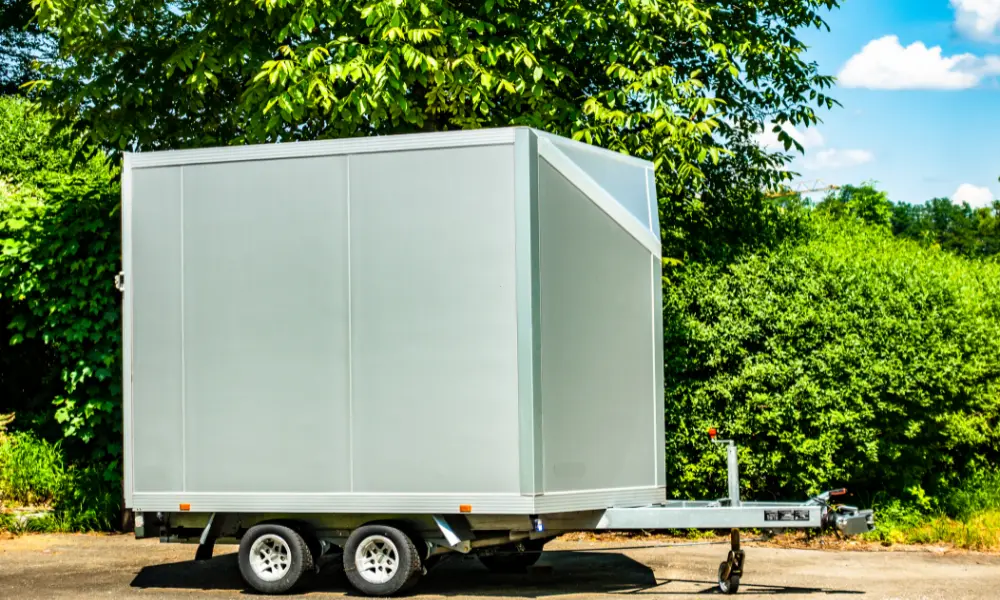Getting your vehicle inspected in New Hampshire can feel like a puzzle, but it doesn’t have to be stressful. Every vehicle registered in New Hampshire needs a safety inspection within ten days of registration. After this initial check, you’ll need to get it re-inspected every year. If you know what to expect, the process will be simple and quick.
Safety and emissions tests are key parts of the inspection. Safety inspections ensure your car is roadworthy, while emissions tests help keep the air clean. In this post, we’ll break down all the steps, making it easy for you to pass with flying colors. Stay with us to learn more and cruise through your next inspection.
Overview of New Hampshire Vehicle Inspection Requirements
In New Hampshire, vehicle inspections are mandatory to ensure your car is safe for the road and meets environmental regulations. There are specific legal guidelines and standards set by the state that you need to follow.
Legal Framework: RSA 266:1 and SAF-C 3200
New Hampshire vehicle inspections are governed by RSA 266:1. This statute requires all registered vehicles to undergo a safety inspection within ten days of registration. After the initial inspection, vehicles must be re-inspected annually, no later than ten days after your birth month. This keeps everyone safer on the roads.
The SAF-C 3200 rules detail the specific operational standards for inspection stations. This includes requiring stations to use an OBD II computer for tests, ensuring vehicles meet emission standards. It’s a good idea to know these rules if you’re taking your vehicle for an inspection or opening an inspection station. This helps ensure that your vehicle complies with all legal requirements.
Preparing for Your Vehicle’s Inspection
To ensure that your vehicle passes the New Hampshire inspection, you should know when and where to go, as well as the documents you need to bring. Proper preparation can help streamline the process.
When and Where to Get Inspected
In New Hampshire, all registered vehicles need a yearly safety inspection. The inspection must be completed within ten days after the end of your birth month. For example, if your birthday is in June, you have until July 10th to get the inspection done.
You need to visit an authorized inspection station to perform the check. These stations are often found at local car service centers, dealerships, and some large repair shops. Make sure to call ahead to confirm that the station is authorized by the New Hampshire Division of Motor Vehicles (DMV) to avoid unnecessary trips.
Required Documents for Inspection
Bring your vehicle registration when you go for the inspection. Without it, the station won’t be able to start the process. You will also need proof of insurance, as this is required by New Hampshire law.
The mechanic will provide you with a Vehicle Inspection Report once the inspection is done. This report details whether your car has passed or failed. Keep this document safe, as it might be needed later.
After passing, you will receive new inspection stickers for your car. These stickers must be displayed on your vehicle to show compliance.
Safety Inspection Checklist
When your vehicle undergoes a safety inspection in New Hampshire, several key systems and components are checked to ensure it is safe to operate. We’ll cover important areas like brakes, lights, tires, wipers, and the vehicle’s body.
Brakes and Steering System
The braking system is crucial for your safety. Inspectors will check for worn-out brake pads, functioning brake lights, and proper brake fluid levels. Any sign of wear or malfunction could lead to a safety hazard.
Similarly, the steering system is examined for any looseness or difficulty in turning. Your steering wheel should turn smoothly without any unusual noises. The power steering fluid level, if applicable, will also be inspected.
Lights, Reflectors, and Electrical System
All of your vehicle’s lights need to work correctly. This includes headlights, tail lights, brake lights, and turn signals. Reflectors on the front and back of your vehicle are also inspected to ensure they are intact and visible.
Your electrical system will be checked as well. This includes the horn, which must sound properly, and the defroster, which should function effectively to clear your windshield.
Tires, Wheels, and Suspension
Tires need to have sufficient tread and should show no signs of excessive wear or damage. Inspectors will also check the tire pressure and alignment to ensure safe handling.
Wheels must be in good condition without any cracks or bends. The suspension system, including shocks and struts, will be examined to ensure it provides adequate support and stability for your vehicle.
Windshield Wipers and Windows
Your windshield wipers must be in good working order to clear rain and debris. The wiper blades should be free from cracks and should wipe the windshield cleanly.
Windows and mirrors must be free from cracks or obstruction. The glass must be clear and correctly glazed. The rearview and side mirrors should provide an unobstructed view of the road behind you.
Body, Chassis, and Bumpers
Inspectors will check the vehicle’s body for rust or significant damage that could affect its structural integrity. The chassis must be in good condition without excessive rust or broken parts.
Bumpers must be securely attached and at the correct height. They should be able to absorb impact as intended to protect you and your vehicle in case of a minor collision.
Emissions Inspection Process
Understanding the emissions inspection process is essential for ensuring your vehicle is both safe and environmentally friendly. Here, we’ll cover the key aspects of On-Board Diagnostics (OBD) tests, various emissions standards, and what to do if your vehicle fails the emissions test.
Understanding OBD Tests
OBD tests are a vital part of the emissions inspection for vehicles. They involve checking the On-Board Diagnostics (OBD) system, which monitors the performance of your vehicle’s engine and emissions control components. This system helps in early detection of problems through the Malfunction Indicator Light (MIL), also known as the check engine light, on your dashboard.
The test is performed by connecting a scan tool to the OBD port in your vehicle, validating Diagnostic Trouble Codes (DTCs) if present. If emission-related components fail, these codes alert you to issues within the Emission Control System. Vehicles typically made after 1996 require this test, ensuring that light-duty trucks and diesel passenger vehicles meet current standards.
Emissions Standards for Different Vehicle Types
New Hampshire requires different standards based on the vehicle type. All vehicles undergo a safety inspection and, if manufactured after 1996, an OBD emissions test. Light-duty trucks and diesel passenger vehicles are not exempt and must pass these tests to qualify for registration.
The gas cap is also inspected to ensure it seals properly, preventing fuel vapor leaks that contribute to emissions. Different vehicle types, such as hybrids and electric vehicles, may have specialized tests or exemptions due to their unique emissions profiles. Knowing your vehicle’s category helps you understand the specific requirements and prepares you for the inspection.
Dealing with a Failed Emissions Test
If your vehicle fails the emissions test, it’s essential to address the diagnosed issues promptly. Initially, you’ll receive a report listing the failed components, usually indicated by specific Diagnostic Trouble Codes (DTCs). Repairs may involve fixing the Emission Control Component, replacing faulty parts, or addressing engine issues highlighted by the Malfunction Indicator Light (MIL).
In certain cases, particularly if the cost of repairs is prohibitive, you may qualify for an Economic Hardship Waiver. This allows for temporary leniency while you organize necessary repairs. Additionally, make sure your gas cap is secure and not leaking, as this is a common failure point in emissions tests.
By understanding the OBD tests, emissions standards for various vehicles, and steps to take if your vehicle fails, you can ensure a smoother inspection process.
After the Inspection
Once your vehicle inspection is complete, there are a few key steps to take depending on whether your vehicle passed or failed the inspection.
Understanding the Vehicle Inspection Report
After your vehicle inspection, you will receive a Vehicle Inspection Report. This report shows the results of your vehicle’s safety and emission tests.
Check to see if any issues were found.
Key items to look for:
- Safety Defects: Problems that must be fixed to ensure safe operation.
- Emission Test Results: Indicates if the vehicle meets environmental standards.
- Malfunction Indicator Light (MIL)/Check Engine Light: Check if any lights are triggered.
Understanding what each section means helps you know what to fix and how urgent it might be.
What to Do if Your Vehicle Fails
If your vehicle fails the inspection, don’t worry. You will need to make the necessary repairs.
Here’s a step-by-step guide:
- Review the Report: Identify what needs fixing.
- Fix the Issues: Take your vehicle to a mechanic for repairs.
- Re-inspected: After repairs, have your vehicle re-inspected.
In case the Check Engine Light is on, it could imply an issue with the vehicle’s efficiency or smooth operation. Be sure to address it promptly. Some issues might only need minor fixes, while others may be more involved. Once all repairs are made, your vehicle should pass the inspection smoothly.
You can find more information about inspection and emission requirements on the NH Division of Motor Vehicles website.
Additional Information for Vehicle Owners
Understanding specific cases and administrative rules can help you navigate New Hampshire’s vehicle inspection requirements more easily. Make sure to stay informed about exemptions, fees, and how to contact the local DMV for any questions.
Exemptions and Special Cases
Some vehicles in New Hampshire qualify for exemptions from regular inspections. Antique motor vehicles over 40 years old are exempt but must still meet basic safety and operational standards. Heavy-duty diesel vehicles with a gross vehicle weight rating over 18,000 pounds are also exempt from emissions testing.
You should know that even exempt vehicles must be in good operating condition. If you’re unsure whether your vehicle qualifies for an exemption, check with your local DMV.
Fees and Administrative Rules
Vehicle inspections in New Hampshire come with specific fees and rules. The cost for a state-licensed inspection typically ranges from $20 to $50. If your vehicle is rejected during an inspection, you usually have up to 60 days to fix the issue and get it retested at no additional charge.
It’s essential to have your vehicle inspected annually. You can get inspected up to four months early if you have a valid registration. Make sure to keep all documentation and stay aware of deadlines to avoid penalties.
Contacting the NH Division of Motor Vehicles
For questions or additional information, contacting the NH DMV can be helpful. You can reach them via phone, email, or their online portal. Their contact information includes the State of NH OBD Program at (603) 227-4120 for emissions concerns.
Your local state-licensed inspection station and NH-authorized automobile dealers can also provide valuable information. Don’t hesitate to call or visit in person for direct assistance. Always verify contact details from the official NH DMV website to ensure accuracy.















